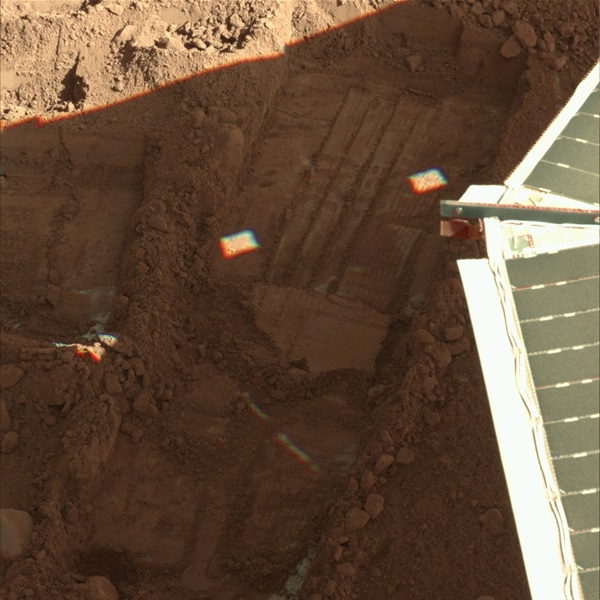Salty, liquid water has been detected on a leg of the Mars Phoenix Lander and therefore could be present at other locations on the planet, according to analysis by a group of mission scientists led by a University of Michigan professor. This is the first time liquid water has been detected and photographed outside Earth.
“A large number of independent physical and thermo dynamical evidence shows that saline water may actually be common on Mars,” said Nilton Renno, a professor at the University of Michigan, Department of Atmospheric, Oceanic and Space Sciences, and a co-investigator on the Phoenix mission.
“Liquid water is an essential ingredient for life. This discovery has important implications to many areas of planetary exploration, including the habitability of Mars.”
Previously, scientists believed that water existed on Mars only as ice or water vapor because of the planet’s low temperature and atmospheric pressure. They thought that ice in the Red Planet’s current climate could sublimate, or vaporize, but they didn’t think it could melt.
This analysis shows how that assumption may be incorrect. Temperature fluctuation in the arctic region of Mars where Phoenix landed and salts in the soil could create pockets of water too salty to freeze in the climate of the landing site, Renno said.
Photos of one of the lander’s legs show droplets that grew during the polar summer. Based on the temperature of the leg and the presence of large amounts of “perchlorate” salts detected in the soil, scientists believe the droplets were most likely salty liquid water and mud that splashed on the spacecraft when it touched down. The lander was guided down by rockets whose exhaust melted the top layer of ice below a thin sheet of soil.
Some of the mud droplets that splashed on the lander’s leg appear to have grown by absorbing water from the atmosphere, Renno said. Images suggest that some of the droplets darkened, then moved and merged – physical evidence that they were liquid.
The wet chemistry lab on Phoenix found evidence of perchlorate salts, which likely include magnesium and calcium perchlorate hydrates. These compounds have freezing temperatures of about -90° Fahrenheit (-68° Celsius) and -105° Fahrenheit (-76° Celsius), respectively. The temperature at the landing site ranged from approximately -5° Fahrenheit (-21° Celsius) to -140° Fahrenheit (-96° Celsius), with a median temperature around -75° Fahrenheit (-59° Celsius). Temperatures at the landing site were warmer than this during the first months of the mission.
Thermodynamic calculations offer additional evidence that salty liquid water can exist where Phoenix landed and elsewhere on Mars. The calculations also predict a droplet growth rate that is consistent with what was observed. And they show that it is impossible for ice to sublimate from the cold ground just under the strut of the lander’s leg and be deposited on a warmer strut, a hypothesis that has been suggested.
Certain bacteria on Earth can exist in extremely salty and cold conditions.
“This discovery is the result of the talent and dedication of the entire Phoenix team and NASA, whose strategy for Mars exploration and the Phoenix mission is ‘follow the water,'” Renno said.










